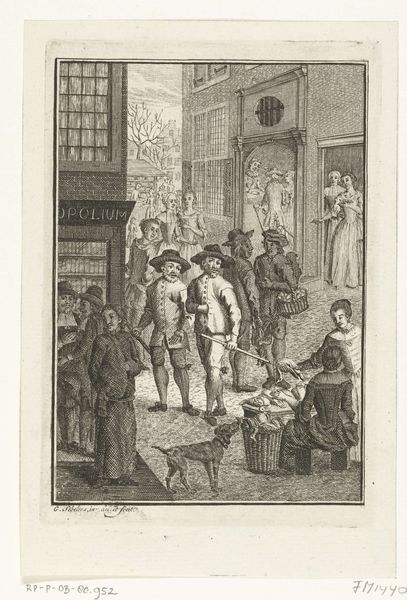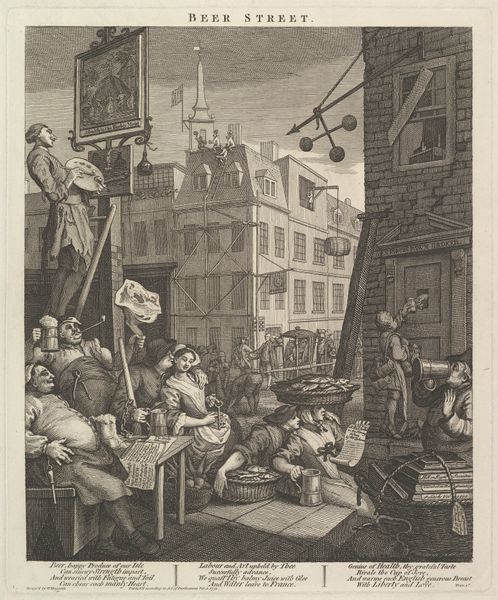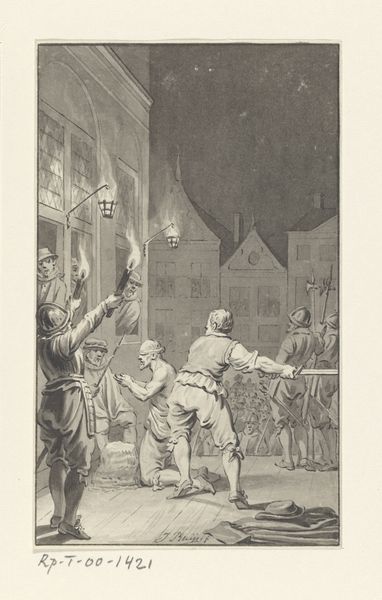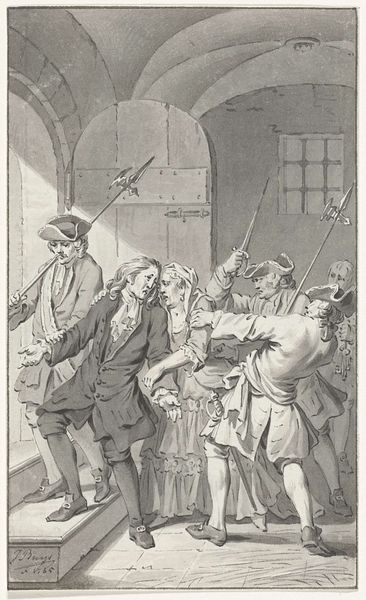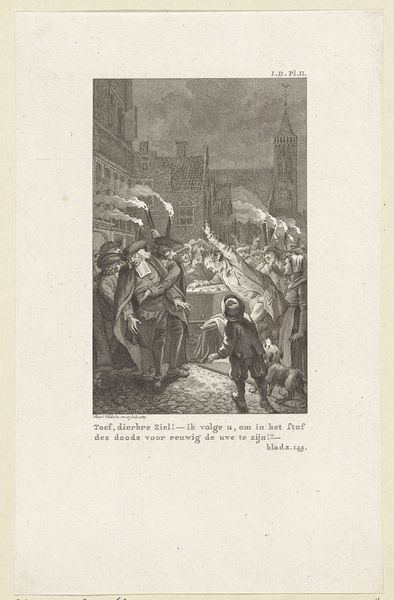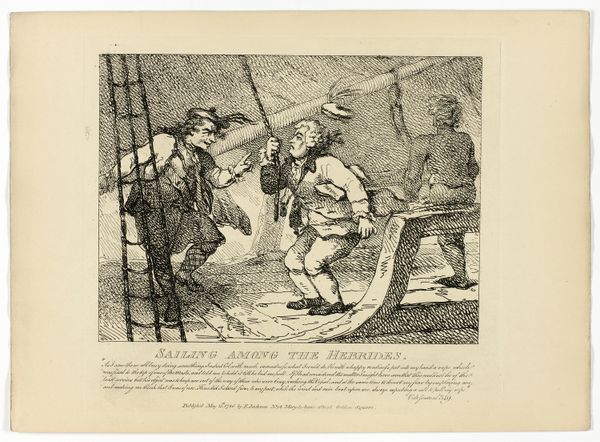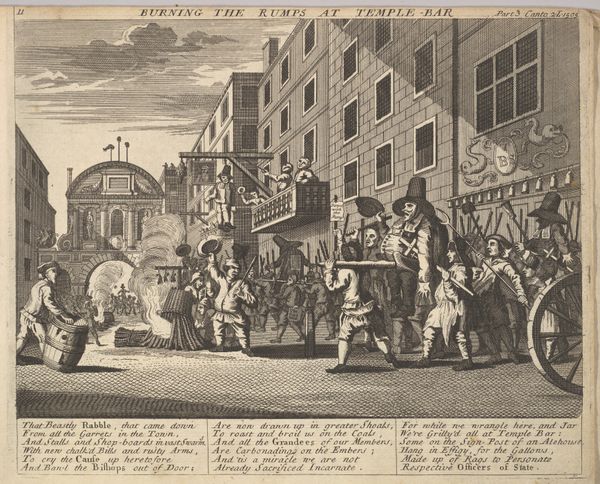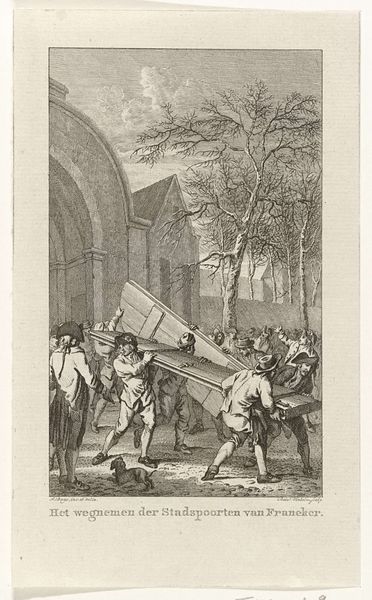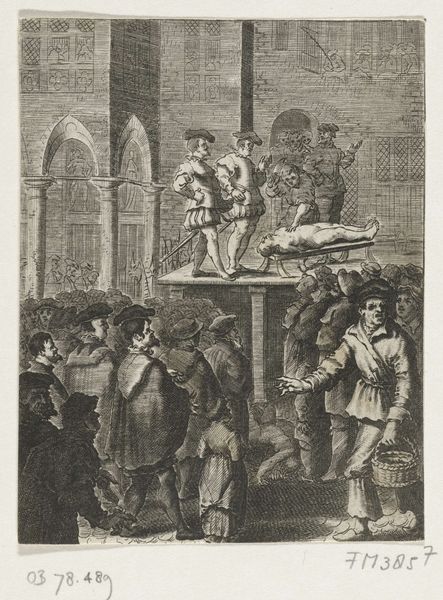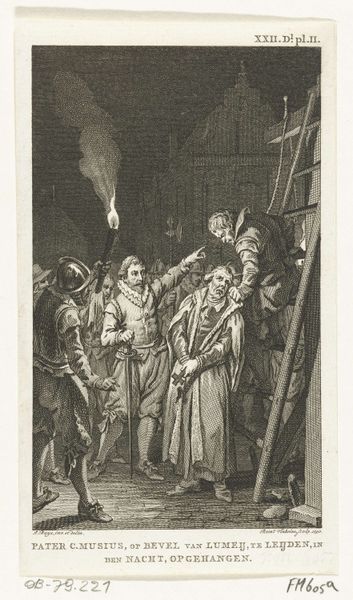
print, etching, engraving
# print
#
etching
#
old engraving style
#
landscape
#
figuration
#
15_18th-century
#
cityscape
#
genre-painting
#
history-painting
#
engraving
#
realism
Dimensions: height 124 mm, width 73 mm
Copyright: Rijks Museum: Open Domain
Curator: Here we have a fascinating street scene captured in a print, “Straat met boekverkoper,” or “Street with Bookseller,” dating back to 1787 by Balthasar Anton Dunker. Editor: Immediately, I'm drawn to the density of detail, especially in the cross-hatching. It creates such a tactile texture. The haphazard stack of books gives a certain… chaotic charm to the otherwise very structured architectural background. Curator: Absolutely. Let’s delve a bit deeper into the composition. Note how the light source, seemingly from the left, sculpts the figures and casts distinct shadows, adding a dramatic touch to this ostensibly everyday scene. Consider also the strategic use of line and perspective—how they create a sense of depth, guiding our eye from the foreground, occupied by the bookseller and his customer, toward the more blurred background figures. Editor: I find the setting incredibly compelling. What’s the prevailing atmosphere? I imagine the bookseller, a champion of Enlightenment ideas, operating within a specific sociopolitical context. How were knowledge and literature distributed during this period? Who had access, and what role did individuals like him play in shaping public discourse? Curator: Precisely. This print reflects the broader trends of the late 18th century. We see emerging market economies changing the accessibility of goods, even knowledge through books. The act of selling here represents more than commerce; it represents access to ideas during the Enlightenment. Notice how Dunker frames this interaction, almost ennobling the transaction through the compositional balance and the detail afforded the central figures. Editor: It strikes me that Dunker presents a highly romanticized version. The 'chaos' feels curated. A commentary perhaps? The shadows, while adding drama, feel deliberate in masking a less sanitized reality. One cannot help but wonder about censorship and power structures influencing the accessibility of "enlightened" thinking. Curator: A keen observation. However, consider how Dunker’s manipulation, through lighting and composition, underscores the potency of ideas and perhaps serves to valorize the seller, his trade, and therefore, in extension, the dissemination of intellectual goods. Editor: So, Dunker prompts us to reassess the value and reach of accessible information within its specific era, while subtly probing deeper societal undercurrents, all skillfully crafted through formal artistic choice. Fascinating indeed. Curator: It offers an intimate, and as you suggested, meticulously framed perspective into the complexities of commerce, intellect and daily life during a period of transformative societal shifts. A compact masterpiece for our considerations, really.
Comments
No comments
Be the first to comment and join the conversation on the ultimate creative platform.

